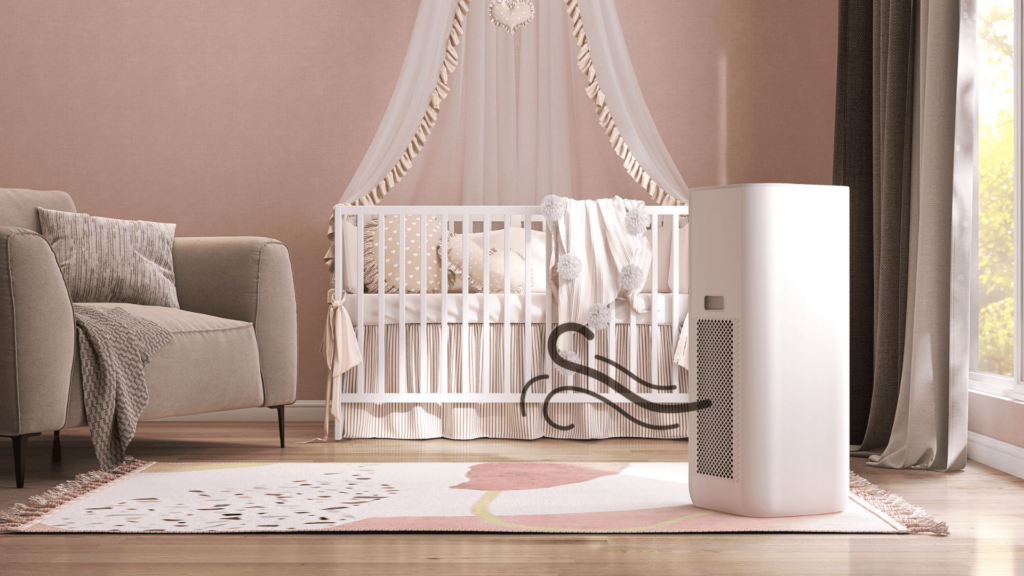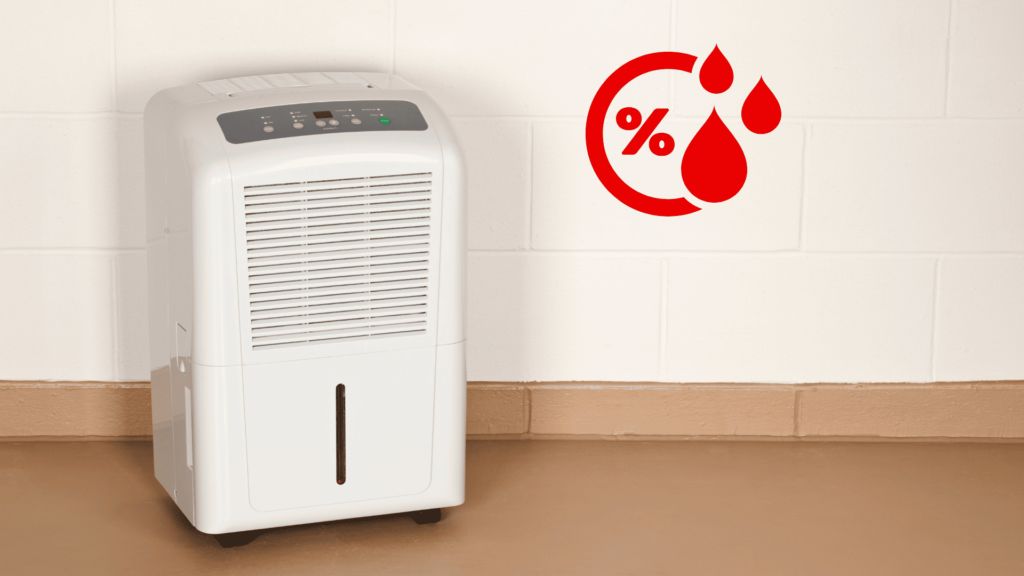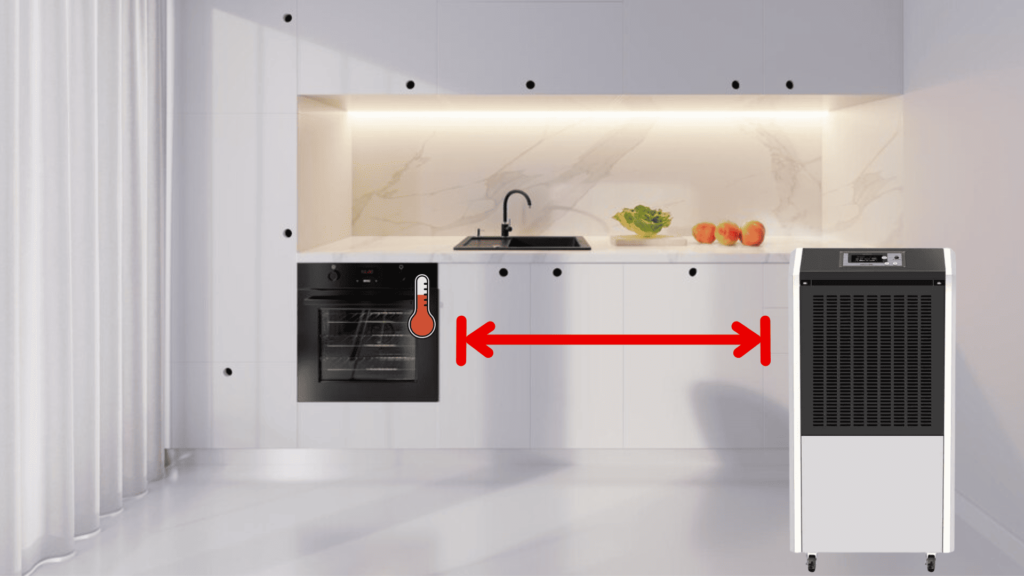Dehumidifiers are essential for maintaining comfortable indoor environments by reducing excess humidity levels. Whether you’re tackling dampness in a basement or managing moisture in working areas, the placement of a dehumidifier can significantly impact its performance. Understanding where to position your dehumidifier for optimal effectiveness ensures the device works efficiently and delivers the best results.
Why Does the Placement of Dehumidifiers Matter?
The placement of dehumidifiers directly affects their ability to combat excess humidity. Placing them in damp-prone areas ensures optimal moisture control. Incorrect placement of a dehumidifier can cause unnecessary energy consumption. However, proper placement improves air quality and protects your space from mold, mildew, and structural damage caused by prolonged dampness.

Where to Put Dehumidifier? The Best Places to Put a Dehumidifier!
Placement is key to optimal performance when deciding where to put a dehumidifier. To combat excess moisture, place it in humid areas like basements, bathrooms, or laundry rooms. Position it centrally, away from walls or obstructions, for better airflow. Keep doors closed for targeted dehumidification, and ensure power outlets are nearby for convenience. This is where you can place a dehumidifier:
In the center of a location
Placing a dehumidifier in the center of the room ensures optimal moisture removal and balanced air circulation. Ensuring unobstructed airflow around the unit enhances efficiency, making it perfect for areas like living rooms, basements, or bedrooms with excessive humidity.
Nearby the Sources of humidity
Positioning a dehumidifier near sources of humidity, such as kitchens, bathrooms, or laundry rooms, ensures maximum efficiency. Placing it close to these areas helps target excess moisture at its origin, preventing dampness, mold, and mildew from spreading throughout your home.
In the Basements
Basements are one of the best places to put a dehumidifier, due to their tendency to trap moisture and develop dampness. Position the dehumidifier centrally for optimal coverage, and ensure it’s near an outlet for easy operation.
Near Windows and Doors
Placing a dehumidifier near windows and doors is ideal, as these areas often allow excess moisture to enter your home. By positioning the device nearby, it can effectively capture and remove humidity, preventing condensation and improving indoor air quality.
Away from Walls and Corners
To maximize a dehumidifier’s efficiency, place it away from walls and corners, ensuring proper airflow around the unit. Central locations within rooms, particularly in moisture-prone areas like basements or bathrooms, work best to reduce humidity effectively and evenly.
In a Fully Ventilated Space
When placing a dehumidifier, choose a fully ventilated space for optimal performance. Ensure there’s enough clearance around the unit for air circulation. Avoid cramped corners or obstructed spots, as proper ventilation enhances efficiency and promotes a healthier indoor environment.
Place it where it is easily accessible
When deciding where to place a dehumidifier, prioritize areas with the highest moisture levels. Keep it in an open space for optimal airflow, away from walls and furniture. Ensure the device is easily accessible for maintenance, such as cleaning the filter or emptying the water tank.
Place it where it is Away from Obstructions
When placing a dehumidifier, it’s essential to choose a location away from obstructions to allow proper air circulation. Ensure nothing blocks the air intake and exhaust for optimal efficiency and moisture reduction.
Place it where it will cause the least disturbance.
When deciding where to place a dehumidifier, focus on areas with excess moisture, such as basements, bathrooms, or laundry rooms. Position it centrally, away from walls and furniture, to ensure proper airflow. Keep it in a low-traffic spot to minimize noise distraction and maximize efficiency in reducing humidity in your home.
Place on even surfaces
When deciding where to place a dehumidifier, choose an even, stable surface to ensure optimal performance. Place it in areas prone to moisture buildup, such as basements, bathrooms, or laundry rooms. Ensure there’s proper airflow around the unit by keeping it at least a few inches away from walls and furniture.
Keep the dehumidifier away from sources of heat or cold
To maximize a dehumidifier’s efficiency, place it in central, moisture-prone areas like basements, bathrooms, or laundry rooms. Keep it away from heat sources, such as radiators or direct sunlight, as well as cold areas near windows during winter. Ensuring proper airflow around the unit also enhances its performance.
Key Factors to Consider When Choosing a Location to Put A Dehumidifier
When choosing a location for your dehumidifier, consider areas with high humidity levels. Ensure proper airflow around the unit by keeping it away from walls or furniture. Place it near moisture sources to maximize efficiency and ensure the drainage system is accessible for continuous operation.
Airflow Requirements
When selecting a location for your dehumidifier, airflow requirements are crucial for optimal performance. Ensuring adequate space around the unit allows unobstructed airflow, improving efficiency in moisture removal. Proper airflow prevents overheating and ensures uniform dehumidification throughout the room, maximizing results.
Avoid near dust, lint, and air particles sources
When choosing a location for your dehumidifier, it’s crucial to avoid areas near dust, lint, and air particle sources. These can clog the dehumidifier’s filters and reduce its efficiency over time. Placing it in a clean, open space ensures optimal air circulation and performance, prolonging the device’s lifespan and enhancing air quality.
Find easy drainage to empty
When choosing a location to place your dehumidifier, ensuring easy drainage access is crucial for convenience and efficiency. Dehumidifiers often require regular water removal, whether through manual emptying or continuous drainage. Positioning the unit near a sink, or drain, or using a hose connection simplifies maintenance, ensuring smooth operation and optimal moisture control.
Room Size and Layout
The size and layout of a room play a crucial role in determining where to place a dehumidifier for optimal performance. Larger rooms may require a central placement to evenly manage humidity, while smaller spaces benefit from corner positioning. Proper airflow and unobstructed placement ensure maximum efficiency in maintaining a comfortable environment.

Where not to put the dehumidifier: Places to Avoid
Placing a dehumidifier in the wrong location can reduce its performance and efficiency. Avoid putting it near open windows or doors, as this brings in excess moisture, overloading the device. Steer clear of small, confined spaces without proper airflow. Never place it near heat sources, as this can interfere with operation.
Near Walls or Furniture
Placing a dehumidifier near walls or furniture can hinder its efficiency and lead to potential damage. Restricting airflow around the device affects its ability to draw moisture from the air effectively. Additionally, moisture buildup behind furniture or along walls may lead to mold growth, defeating the purpose of using a dehumidifier.
Close to Heat Sources
When positioning your dehumidifier, avoid placing it near heat sources like radiators, ovens, or heaters. Heat can interfere with the device’s efficiency, forcing it to work harder and reducing effectiveness. Additionally, placing it close to heat sources may lead to inaccurate humidity readings, compromising its ability to maintain optimal indoor moisture levels.
Too Close to Water Sources
When placing a dehumidifier, avoid positioning it too close to water sources like sinks, bathtubs, or showers. Excess proximity can expose the device to splashes or humidity surges, potentially damaging its components. Ensure moderate distance to maintain effective moisture control and protect the dehumidifier’s longevity. Proper placement enhances performance.

FAQs
Can you maximize the effectiveness of a dehumidifier by placing it right?
Positioning your dehumidifier correctly can significantly enhance its performance. For optimal results, place it in a central location within the room, away from walls and obstructions, to ensure proper airflow. Avoid placing it near heat sources or open windows. Correct placement maximizes moisture removal, ensuring your space stays dry and comfortable.
Dehumidifier on the floor or up high?
The placement of a dehumidifier can significantly impact its effectiveness. Setting it on the floor is ideal for addressing rising dampness typically found at lower levels. However, placing it higher may be better for elevated moist areas. Ultimately, ensuring proper airflow and proximity to moisture sources is key to optimal performance.
Should a dehumidifier be elevated?
Elevating a dehumidifier can improve its efficiency by allowing better air circulation and easier access to the control panel. Placing it on a sturdy surface, like a table or shelf, ensures the unit effectively draws in humid air and prevents water damage to floors. However, always follow manufacturer guidelines for optimal placement.
How high off the floor should a dehumidifier be?
Positioning a dehumidifier correctly is crucial for optimal performance. Ideally, a dehumidifier should be placed at least 12-18 inches off the floor. This height ensures better air circulation and prevents the unit from being affected by cooler, damp air near the ground. Proper placement maximizes efficiency and helps maintain a balanced humidity level.
Conclusion
Placing your dehumidifier in the most humid areas, like the basement, bathroom, or laundry room, ensures optimal effectiveness. Keep it away from walls or obstructions for proper airflow. By strategically positioning your dehumidifier, you can maximize its performance, creating a healthier, more comfortable living environment, while preventing mold and moisture-related issues.





